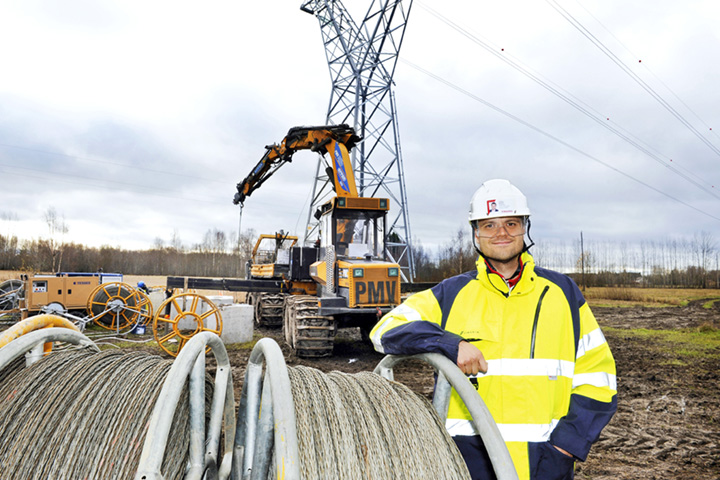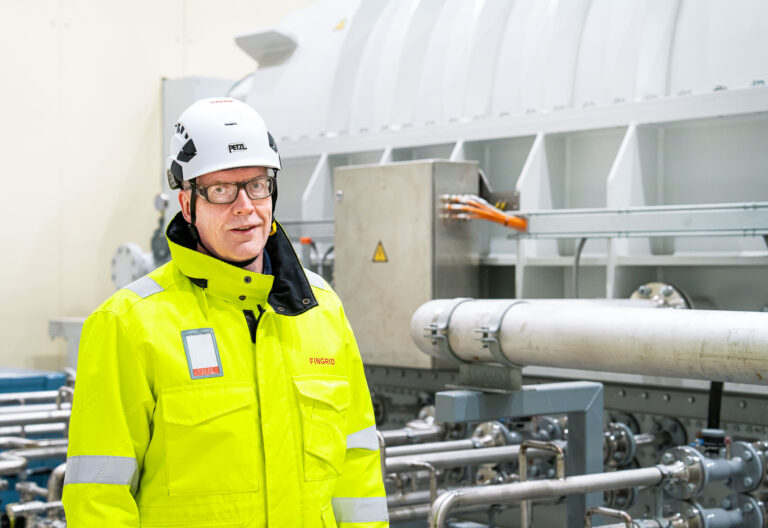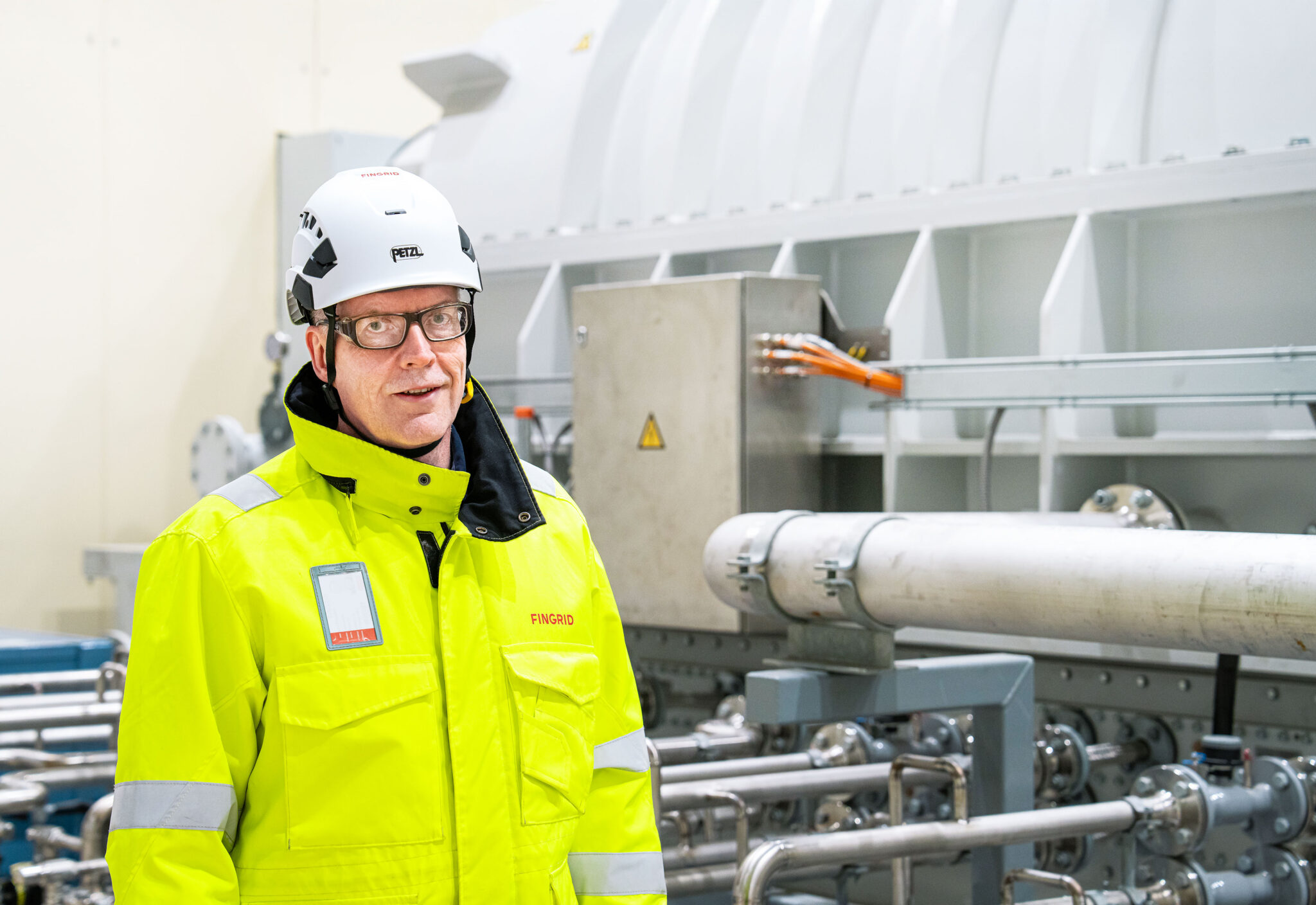RAC3
Muhos (Pyhänselkä)–Keminmaa–in Sweden: Messaure
Fingrid is planning a new 400 kV main grid transmission line between Pyhänselkä in Muhos and Keminmaa. The project is part of the third alternating current connection (RAC3) between Finland and Sweden. The section between the Pyhänselkä and Keminmaa substations will be completed first and, after clarification of the routing options on the Swedish side, will be followed by the section from Keminmaa to the Swedish border at Tornionjoki river. All in all, approximately 200 kilometres of new transmission line will be built on the Finnish side.

In August 2017, Fingrid and Svenska kraftnät signed an agreement concerning the realisation principles for the new connection. The line will be built in parts, simultaneously on both sides of the border. Vuennonkoski rapids on the Tornionjoki river has been agreed as the site of the border crossing. Financial support from the EU is being sought for the project, and the estimated completion data for the entire RAC3 connection is 2025. The busiest construction period will be in 2023–2025.
The length of the transmission line between Pyhänselkä in Muhos and Keminmaa is approximately 153 kilometres, 86 kilometres of which will be new corridor. The project is located in areas of the municipalities of Muhos, Oulu, Ii, Simo and Keminmaa. The project will strive to utilise existing transmission line routes as much as possible.
The environmental impact assessment (EIA) is currently in progress for the project. The Pyhänselkä–Keminmaa EIA is nearly finished, and the fairy slipper areas and Stone Age inhabitation sites have been taken into account in route planning. The Keminmaa–Tornionjoki EIA has begun. This will be followed by the general planning phase, which is already under preparation.
The name RAC3 is short for: Ruotsi (Sweden) + AC (Alternating Current) + the third connection to Sweden.
Specialists: Construction Manager Keijo Välimaa and Senior Project Manager Ritva Laine.
Forest Line
Petäjävesi–Muhos (Pyhänselkä)

After RAC3 brings electricity to the Finnish side, the Forest Line will carry it to centres in southern Finland. The Forest Line will be implemented as a 400 kV transmission line that replaces the 220 kV system in Central Finland, which is nearing the end of its technical service life. The existing 220 kV transmission lines between Central Finland and Oulu were built in the 1940s and 1950s. Petäjävesi substation will be reinforced with a 400/110 kV transformer and Pyhänselkä substation will be expanded significantly.
The Forest Line will run for approximately 310 kilometres from Petäjävesi, which is located close to Jyväskylä, to Muhos, which is near Oulu. The selected line route is located in the areas of Petäjävesi, Uurainen, Multia, Saarijärvi, Karstula, Kivijärvi, Kinnula, Reisjärvi, Pihtipudas, Haapajärvi, Nivala, Haapavesi, Siikalatva, Liminka, Tyrnävä and Muhos.
The Forest Line is in the general planning phase. According to the plan, Fingrid will apply to the Finnish Government for an expropriation permit this autumn. Fingrid has contacted the landowners and signed preliminary agreements with some of them. Hearing meetings for landowners without an agreement were held recently.
According to the plan, the expropriation permit from the Finnish Government will be received during summer 2019 and initial expropriation meetings in 15 municipalities soon after that. The plan calls for construction of the Forest Line to begin in autumn 2019 and its completion is expected by the end of 2022.
Specialist: Project Manager Hannu Kuikka
Rautarouva (Iron Lady) II
Lieto–Forssa , Koria–Yllikkälä and Hikiä–Orimattila

The last parts of Finland’s first high-voltage line – the Iron Lady built between Imatra and Turku in the late 1920s – will be dismantled next year. During the early days of our independence, it was assumed that the Imatra hydropower plant would always be able to produce enough electricity to meet the needs of the entire country. Today, its total power output of 192 MW covers only a tiny portion of our consumption peak of approximately 15,000 megawatts. Times have changed and the main grid is changing with them.
A 400 kV + 100 kV connection running from Lieto, located near Turku, to Forssa is already in use. A renewed 110 kV connection from Koria substation in Kouvola to Yllikkälä near Lappeenranta has also been completed and implemented recently.
The last part of the old line will be replaced with a transmission line being built between Hikiä and Orimattila, which will be completed in December 2019. The new transmission line will follow the old Iron Lady route from Hikiä to Iso-Henna, but 16 kilometres of transmission line will be built on a new route from Iso-Henna to Orimattila, alongside the Lahdentie motorway. Nearly all the towers on the new route have already been installed and the conductor work is in progress. The worksite is easily visible from the motorway. The old connection from Iso-Henna to Tönnönmäki will be dismantled. At this time, foundation work is in progress at the worksite between Hikiä and Iso-Henna. Transmission line arrangements for the future Hikiä-Orimattila transmission line are also being done at the Hikiä end. A new substation is currently under construction in Orimattila, and Hikiä substation is being expanded.
This new entity from Imatra to Turku has been named Iron Lady II in honour of its historic predecessor.
Specialists: Project Managers Hannu Kuikka and Tuomas Maasalo
Transmission lines originating at Vuoksi substation
Lempiälä–Vuoksi and Onnela–Vuoksi

The new Vuoksi substation has been built between Joutseno and Imatra, and the transmission lines from there to the east and west are being renewed. The new 110 kV substation was taken into use the summer before last, and the new transmission lines are being completed in stages in 2018 and 2019. As the need for energy increases in the future, a 400 kV
substation will be built in Vuoksi that can be connected to Fingrid’s 400 kV grid via the 400/110 kV Lempiälä–Vuoksi transmission line now under construction.
The new substation and transmission line routes to the east (Onnela) and west (Lempiälä) had been planned for 10 years. The renewal began when Kemira decided to expand the sodium chlorate production at its Joutseno plant. The plant expansion was inaugurated in November 2017 and electricity consumption at the site has increased significantly. The region has a lot of other industry as well, and Fingrid wants to contribute to making investments possible.
The 110 kV transmission lines from Onnela to Vuoksi are already completed and in use. The Lempiälä–Vuoksi project includes about 24 kilometres of new 400/110 kV transmission line. The new transmission line will be built on the site of the 110 kV line that dates back to the 1950s and is now being dismantled. The old 110 kV transmission line between Imatra and Lempiälä has been dismantled and foundations have been made for the new line. Tower assembly and erection began in October. The transmission line will be commissioned in June 2019.
Specialist: Senior Project Manager Ritva Laine
North Karelia grid reinforcements
Transmission lines between Kontiolahti, Pamilo and Uimaharju substations
Fingrid is renewing the 110 kV transmission lines in North Karelia: Uimaharju–Pamilo, Kontiolahti–Uimaharju and Kontiolahti–Pamilo. The transmission lines built in the 1960s in areas of the municipality of Kontiolahti and city of Joensuu are ageing and their transmission capacity is inadequate. Renovation work will modernise the transmission line structures and the wooden towers will be replaced, mainly with steel towers of a similar type. Reinforcement of the main grid will allow these transmission lines to better meet demand in the future.
The grid reinforcements are in the general planning phase. The first project, covering the distance between Uimaharju and Pamilo, will be built in January–September 2019. The second project involves renewing the section between Kontiolahti and Uimaharju, and work is scheduled to begin in summer 2019. The Kontiolahti–Pamilo transmission line will be renewed in the third phase. A total of 112 kilometres of transmission line will be renewed. A new substation will be built in Pamilo, and the Kontiolahti and Uimaharju substations will be updated. The entire project is scheduled for completion in 2022.
The transmission lines form a triangle located in demanding terrain, which is swampy in some places and has large differences in elevation. One of the particular challenges of this project is the need to take ice load areas into consideration.
Since new transmission line projects are mostly located in the same place as old lines, they do not cause great changes in land use for landowners. The number of towers may actually be less than earlier.
Specialist: Senior Project Manager Antti Linna







